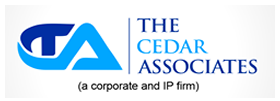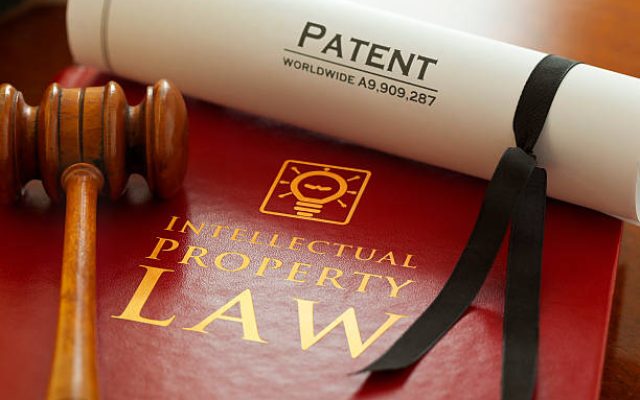
INDUSTRIAL DESIGN
Essentially when you register a design, what you are doing is you are protecting the external shape of a product. It protects the overall visual appearance of a product, or part of a product, for example, the lines, contours, shape, texture and/or surface decoration. A registered design/industrial design however does not protect the technical or functional features of the product, it only applies to the aesthetic nature of a finished product, and is distinct from any technical or functional aspects. This type of intellectual property protection is relevant for things like fashion and handicrafts, watches, jewellery, household products, toys, furniture, textile designs etc.

Once validly registered, a registered design/industrial design gives the owner the right to stop anyone copying the external design of their product, within their geographical jurisdiction, in this case, within Nigeria. The industrial design/registered design is referred to as a ‘design patent’ in the United States of America. A design registration can be used to stop other individuals in Nigeria from using a visual design which is identical or similar to the registered design/industrial design, regardless of the product it is applied to.
“WHY YOU SHOULD REGISTER A DESIGN/INDUSTRIAL DESIGN IN NIGERIA”
- Registration gives the user the monopoly over the use of the registered design/industrial design.
- Industrial designs are assets that can increase the commercial value of a company and its products. The more successful a design, the higher is its value to the company.
- A protected design can be used as a revenue generation tool for an individual or a company, as it may be licensed or sold to 3rdparties for a fee.
- Registration encourages competition and innovation, in that people are more incentivised to create their own unique and new designs rather than copying from others.
CRITERIA TO REGISTER A DESIGN/INDUSTRIAL DESIGN
- The design must be “new”– a design meets the newness criteria if no identical design has been made available to the public before the date of filing, or the application for registration.
- The design must be “original”– designs are considered as ‘original’, if they have been independently created by the designer and are not a copy or an imitation of existing designs.
- The design must have “individual character” – here what is required, is that the overall impression produced by a design on an informed user differs from the overall impression produced on such a user by any earlier design which has been made available to the public.
- The design must not be dictated exclusively by the technical function of the product. If this is the case, the design registration is not the appropriate form of intellectual property. A more relevant application would be a patent application.
- The design must not include protected official symbols or emblems such as the national flag, the coat of arms etc.
- The design must not be one which is considered to be contrary to public order or morality.
PROCESS TO REGISTER A DESIGN/INDUSTRIAL DESIGN
To register an industrial design, an application must be filed at the Registry of Trademarks, Patents and Designs in Nigeria. A design that has already been disclosed to the public by, for example, advertising it in your company’s catalogue, a brochure, or on social media may no longer be considered “new”. It becomes part of the public domain and cannot be protected after six months of such exhibition, or unless the priority of an earlier application can be claimed.
In Nigeria, the right to a registered design lasts for 5 years but may be extended for two further periods each of five years. Therefore, the total period any product can be registered for protection is 15 years.
REQUIREMENTS FOR COPYRIGHT REGISTRATION
The author of a work is the creator or maker of the work. While the copyright owner, is the person conferred with the right to control the doing of any of the restricted acts in relation to the copyright work. Copyright of a work gives the Author exclusive right to publish, copy or otherwise reproduce the work; to distribute the work publicly (or not so publicly); and to perform or display the work, if it is a work of performance or visual art. Owning a copyright also gives you the exclusive right to prepare “derivative works,” which are the original works in new forms – for example, a translation into another language, or a movie made from a novel, or a revised or expanded edition of an existing work. Section 1 of the Copyright Act states very categorically that the following will be eligible for copyright protection in Nigeria:
1. Literary works irrespective of literary quality which fall under the under listed categories:
- Novels, Stories and poetic works;
- Plays, stage directions, film scenarios and broadcasting scripts;
- Choreographic works;
- Computer programmes;
- Text-Books, treatises, histories, biographies, essays and articles;
- Encyclopedias, dictionaries, directories and anthologies;
- Letters, reports and memoranda;
- Lectures, addresses and sermons;
- Law reports, excluding decisions of courts;
- Written tables or compilations.
Any musical work irrespective of musical quality and includes works composed for musical accompaniment.
2. Artistic works which irrespective of quality fall under any of the following categories:
- Paintings, drawings, etchings, lithographs, woodcuts, engraving and prints;
- Maps, plans and diagram’s;
- Works of sculpture;
- Photographs not comprised in a cinematograph film;
- Works of architecture in the form of buildings and models;
- Works of artistic craftsmanship and also pictorial woven tissues and articles of applied handicraft and industrial art.
3. Cinematograph Film:
This includes the first fixation of a sequence of visual images capable of being shown as a moving picture and of being the subject of reproduction and includes the recording of a sound track associated with the cinematograph film.
4. Sound Recordings:
This is defined as the first fixation of a sequence of sound capable of being perceived aurally and of being reproduced but does not include a sound track associated with a cinematograph film.
5. Broadcast:
This is a sound or television broadcast by wireless telegraphy or wire or both or by satellite or cable programmes and includes re-broadcast.
To register copyright we will need to submit to the Commission, a completed registration form, along with two (2) copies of the work, and evidence of payment of the prescribed fee.



